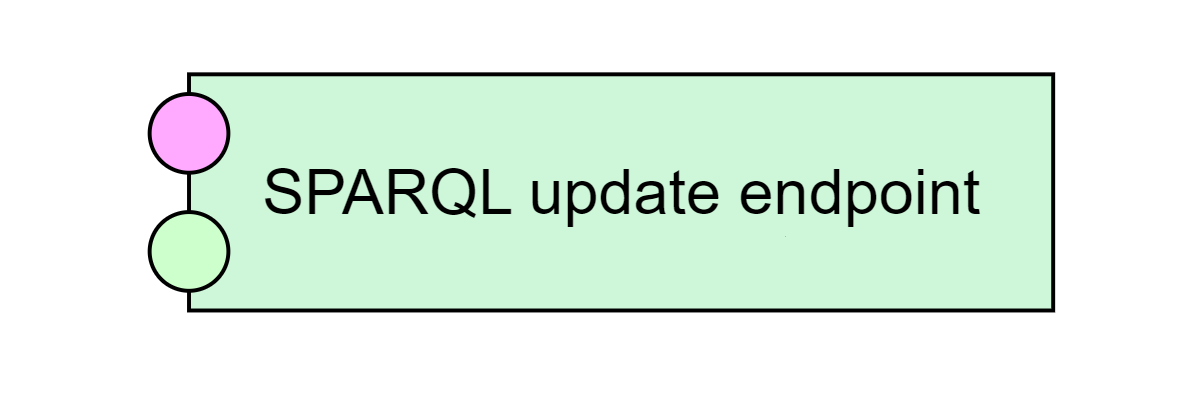SPARQL endpoint
Loader, allows the user to store RDF triples in a SPARQL endpoint using SPARQL 1.1 Update.
- SPARQL Update endpoint
- URL of the SPARQL endpoint accepting SPARQL 1.1 Update queries
- Target graph IRI
- IRI of the RDF graph to which the input data will be loaded
- Clear target graph before loading
- When checked, executes SPARQL CLEAR GRAPH on the target graph before loading
- Commit size
- Number of triples sent to triple store at once using the RDF4J RepositoryConnection
- User name
- User name to be used to log in to the SPARQL endpoint
- Password
- Password to be used to log in to the SPARQL endpoint
Characteristics
- ID
- l-sparqlendpoint
- Type
- loader
- Inputs
- RDF single graph - Input
- RDF single graph - Configuration
- Look in pipeline

- Sample pipeline
- available
The SPARQL endpoint component takes the input RDF data and loads it to a remote SPARQL endpoint using the SPARQL 1.1 Update INSERT DATA query.
Runtime configuration
Below you can see sample runtime configuration for the component. You can also import a sample pipeline. Note that RDF blank nodes are not allowed in runtime configurations.
@prefix lse: <http://plugins.linkedpipes.com/ontology/l-sparqlEndpoint#> .
@prefix rdf: <http://www.w3.org/1999/02/22-rdf-syntax-ns#> .
@prefix rdfs: <http://www.w3.org/2000/01/rdf-schema#> .
@prefix xml: <http://www.w3.org/XML/1998/namespace> .
@prefix xsd: <http://www.w3.org/2001/XMLSchema#> .
<http://localhost/resources/configuration> a lse:Configuration ;
lse:clearGraph true ;
lse:endpoint "http://localhost:3030/fuseki/update" ;
lse:password "" ;
lse:targetGraphURI "http://localhost/test/graph" ;
lse:userName "" .